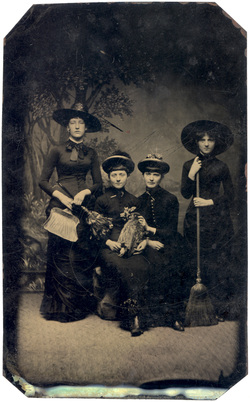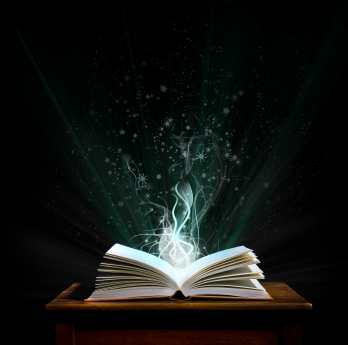
The movie begins with a montage of faux newspaper clippings chronicling the eponymous siblings' famous exploits defeating legendary evil witches. These were drawn in the late medieval woodcut style (never mind the anachronism; there were many more) and meant to refer visually to the Germanic fairy tale collected by the Grimm brothers. Again, entertaining, but these images included so many of the stereotypes that clearly survive in the popular imagination - broomsticks, cauldrons, black cats, and many far darker. The evil witches were portrayed as ugly old crones, with long crooked noses, rotten teeth, moles, and goat's horns. I said to my husband, "This will be an interesting sociological study, as well as a movie."
Most of this imagery descends directly from one of the world's worst examples of hate literature, the Malleus Maleficarum, the Hammer of Witches. Essentially, it was a witch hunter's handbook, a do-it-yourself manual on how to identify witches, refute claims of their innocence, and prosecute them to the point of capital punishment. Published in 1487, it was a bestseller of its time, and although today we might laugh at its logic and dismiss its arguments, it was responsible for the torture and deaths of thousands of people.
In Hansel & Gretel: Witch Hunters the lead characters end up discovering that their own mother was a witch, but of course a "white witch." They vow to continue to hunt down and kill any other kind at the movie's end, and presumably they do. Theirs is a simple world: save good, kill evil. The killing might be messy, but the morality isn't.
Here's where the sociology bit comes in: the movie Hansel and Gretel never wonder why any of the evil witches turned to the dark arts. They never consider why these women - and they're ALL women - are living alone in the forest. They never ask what, exactly, divides good witchcraft from bad witchcraft. Sure, fattening and eating children is bad, but what's the metaphor? What's really going on in the original tale collected by the Grimms?

 RSS Feed
RSS Feed